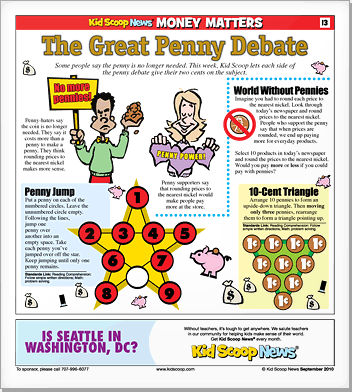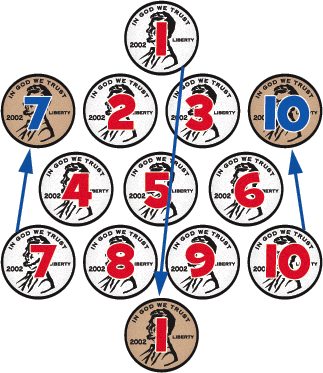Students respond positively to a newspaper of their very own. Take advantage of their enthusiasm by employing it as a teaching tool. Have them write their name on the cover. Point out local stories and students so students can identify with their peers. Interactive pages with activities will motivate young learners.
Use Kid Scoop News features to support 5 key skills central to reading achievement:
- Phonemic awareness
Select grade-appropriate words as a resource and have your students sorts words into categories by sound. Have students circle and write on their pages to identify specific sound segments. - Phonics
Practice decoding skills using blending, digraphs, plurals and by reading base words and affixes. - Fluency
Model fluent reading for students then have students read aloud to improve fluency. - Vocabulary Development
Identify grade-appropriate vocabulary words. Discuss meaning and definition. Use as spelling words. Where appropriate, have students identify:- Compound words
- Base words
- Prefixes or suffixes
- Parts of speech, single and plural verbs, proper nouns, adverbs, prepositional phrases
- Syllables
- Antonyms and synonyms
- Multiple-meaning words
- Vowel sounds
- Greek or Latin roots
- Idiomatic phrases
- Figurative language: e.g., onomatopoeia, alliteration, metaphors, and similes
- Comprehension
Ask students to explain a page. Quiz them on the content. Have them write a paragraph related to the topic of the page. Follow the directions for an activity on the page.
Use Kid Scoop News to teach:
- preview and review
- skim and scan
- summarizing
- identify main idea and supporting detail
- problem and solution
- information gathering
Standards-based instruction
Identify California Academic Standards throughout Kid Scoop News. Our pages support standards-based learning.
Kid Scoop News Thematic pages cover topics on the environment, social studies, health and fitness, financial literacy, character education and more.
Below we take a Financial Literacy/Math page as an example and show you how you can use it as classroom lesson.
The Great Penny Debate
Lesson 1
Content Focus: Financial Literacy/Mathematics
Ask:
What can you buy with a penny? Are pennies useful?
How many pennies are in a dollar? (A: 100) Ten dollars? (A: 1,000) One hundred dollars? (A:10,000) Do you see a pattern?
Sometimes authors are paid by the word. How much would the author be paid for this page? How much would you be paid for a paragraph? How might this affect your writing?

Do:
Say: “Some people say the penny is no longer needed. Others say we can’t do without it. What do you think?” Discuss.
Review vocabulary words: debate, sense, support, rounding, and products. Write words on the board with brief definitions.
Make a T chart. Label one side Penny Haters and the other side Penny Supporters. As students read, identify each side’s point of view.
Read “World Without Pennies.” Review rounding to the nearest nickel. Write these examples on the board:
$1.31 or $1.32 = $1.30
$1.33 or $1.34 = $1.35
$1.36 or $1.37 = $1.35
$1.38 or $1.39 = $1.40
Give students a list of figures to round.
Review:
Would we always end up paying more if we rounded pennies to the nearest nickel?
Lesson 2
Ask:
What is a penny made of? If pennies are made of copper and the price of copper increases, what might happen?
Do:
Review vocabulary words: rearrange, remains, unnumbered, upside-down. Have students find and circle the words as they read.
Distribute 10 pennies for these activities. Review directions for Penny Jump. Have students keep a running total of the amount under each penny used to jump over another as their score. For example: if they move the 2 penny over the 6 penny, they get 2 points.
Review directions for 10-Cent Triangle. Challenge students to make up a “penny puzzle of their own.”
Review:
Here are the answers to the triangle puzzle.

Extensions
Model different combinations of coins and bills you could use to pay for an item that cost $5.53. Example:
1 five-dollar bill
1 fifty-cent piece
3 pennies
Or
5 one-dollar bills
2 quarters
2 pennies etc.
Sometimes authors are paid by the word. If you were paid one penny for each word you wrote, how might that affect your writing. Write out one sentence and one paragraph. Calculate how much each would be worth if you were paid one penny per word. Challenge students to increase the value of their writing by adding descriptive words and phrases.

